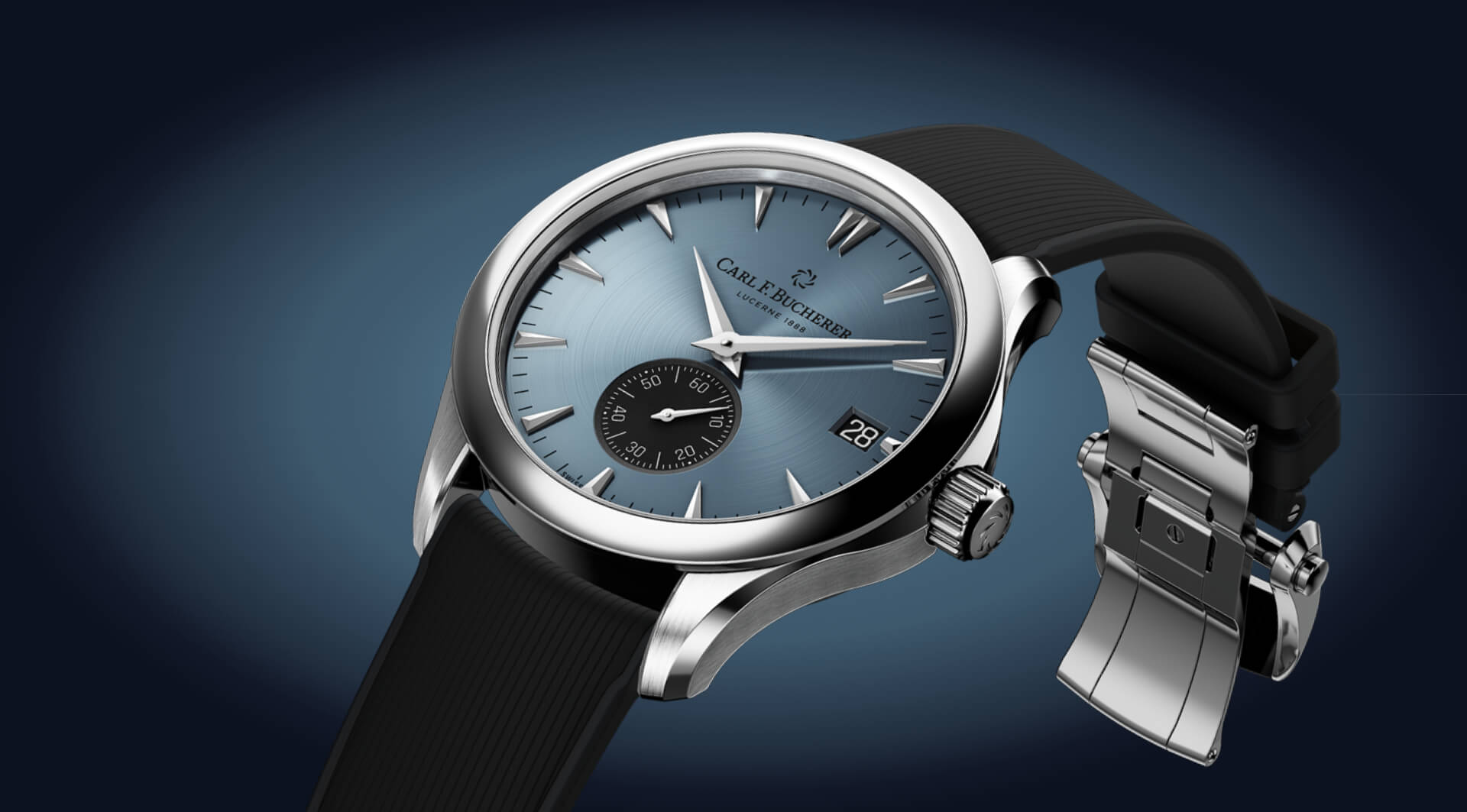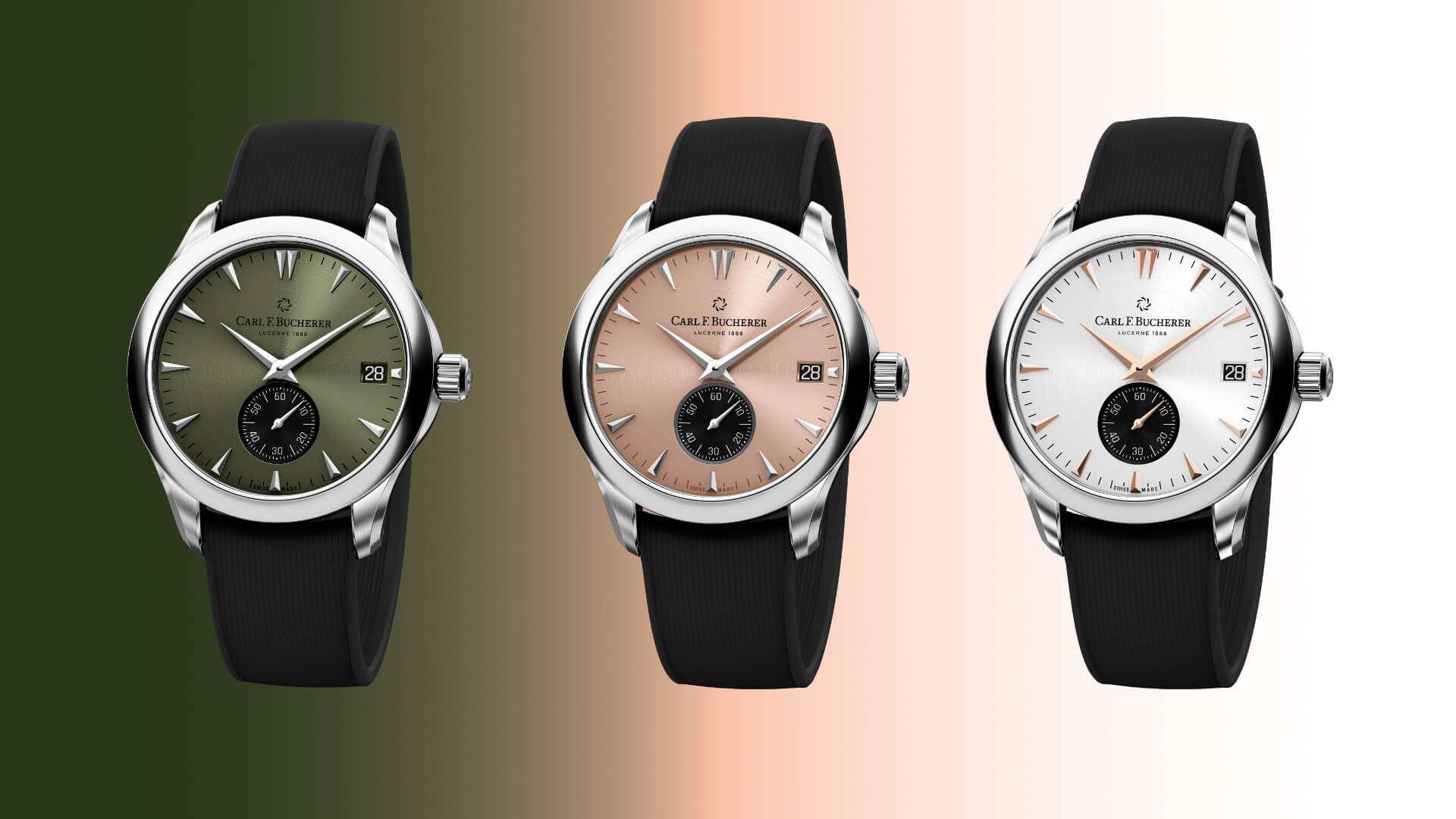 We are in an age of color. Everyone is dropping models in a panoply of colors (See: Rolex, Omega, and every single microbrand). We’re not just talking about a model with a blue dial or a green dial, but entire rainbows of dials in a single release. This is a bit of conjecture, but to my mind, this has come about for a few reasons. First, the industry-wide experiments with green and blue dials (decidedly safe colors) went very well, and brands became more comfortable with color. Second, the vintage watches that brands were reissuing en masse over the past 10 years were replete with splashes of bright color, and the success of those reissues further demonstrated the market’s appetite for color. Third, I think brands saw the success micro-brands were having with a wider array of colors. So it is that Carl F. Bucherer just updated its Manero Peripheral with half a dozen new dials in the smaller version of the model.
We are in an age of color. Everyone is dropping models in a panoply of colors (See: Rolex, Omega, and every single microbrand). We’re not just talking about a model with a blue dial or a green dial, but entire rainbows of dials in a single release. This is a bit of conjecture, but to my mind, this has come about for a few reasons. First, the industry-wide experiments with green and blue dials (decidedly safe colors) went very well, and brands became more comfortable with color. Second, the vintage watches that brands were reissuing en masse over the past 10 years were replete with splashes of bright color, and the success of those reissues further demonstrated the market’s appetite for color. Third, I think brands saw the success micro-brands were having with a wider array of colors. So it is that Carl F. Bucherer just updated its Manero Peripheral with half a dozen new dials in the smaller version of the model.
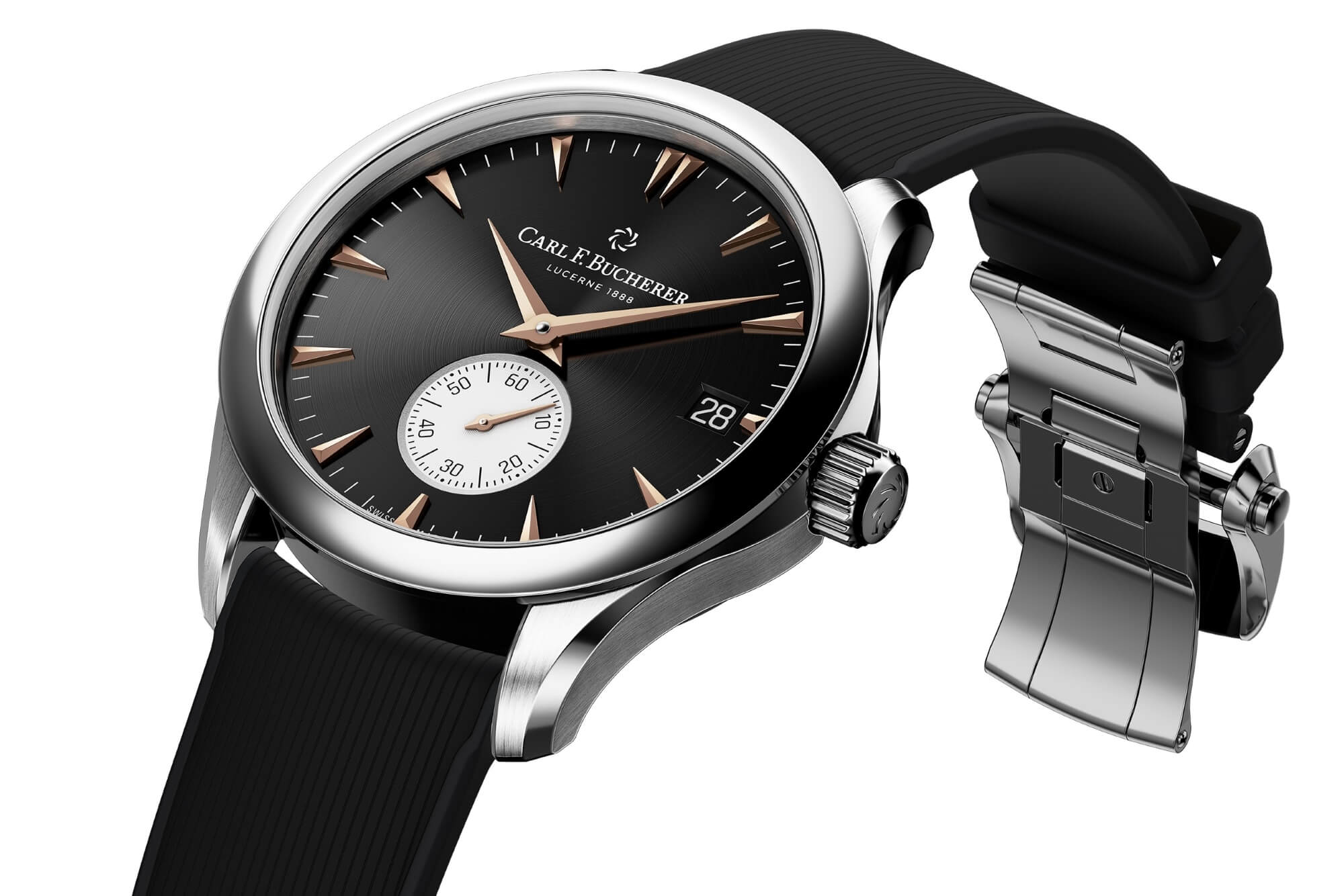 The stainless steel case has remained unchanged for these new models: at 40.6mm-wide and 11.2m-thick, these should be very wearable. The case blends brushed and polished finishing for sporty refinement, with a domed sapphire crystal with anti-reflective coating. The pull-out crown is partially nested in the case band, which flows slightly wider on the crown side, with a polished chamfer tracing the case from end to end. These new models will all be paired with black rubber hybrid quick-release straps that are equipped with Bucherer’s excellent deployant clasp. While there’s no indication that these will be available to order on a bracelet, other 40.6mm Manero Peripherals are, so you’d probably be able to get one from after-sales if you were interested. It is surprising to learn that the Manero Peripheral only has 30m water resistance. We’re used to seeing 30m on a crazy Jacob & Co. or something, but to see resistance that low on a decidedly sporty watch is a bit disappointing.
The stainless steel case has remained unchanged for these new models: at 40.6mm-wide and 11.2m-thick, these should be very wearable. The case blends brushed and polished finishing for sporty refinement, with a domed sapphire crystal with anti-reflective coating. The pull-out crown is partially nested in the case band, which flows slightly wider on the crown side, with a polished chamfer tracing the case from end to end. These new models will all be paired with black rubber hybrid quick-release straps that are equipped with Bucherer’s excellent deployant clasp. While there’s no indication that these will be available to order on a bracelet, other 40.6mm Manero Peripherals are, so you’d probably be able to get one from after-sales if you were interested. It is surprising to learn that the Manero Peripheral only has 30m water resistance. We’re used to seeing 30m on a crazy Jacob & Co. or something, but to see resistance that low on a decidedly sporty watch is a bit disappointing.
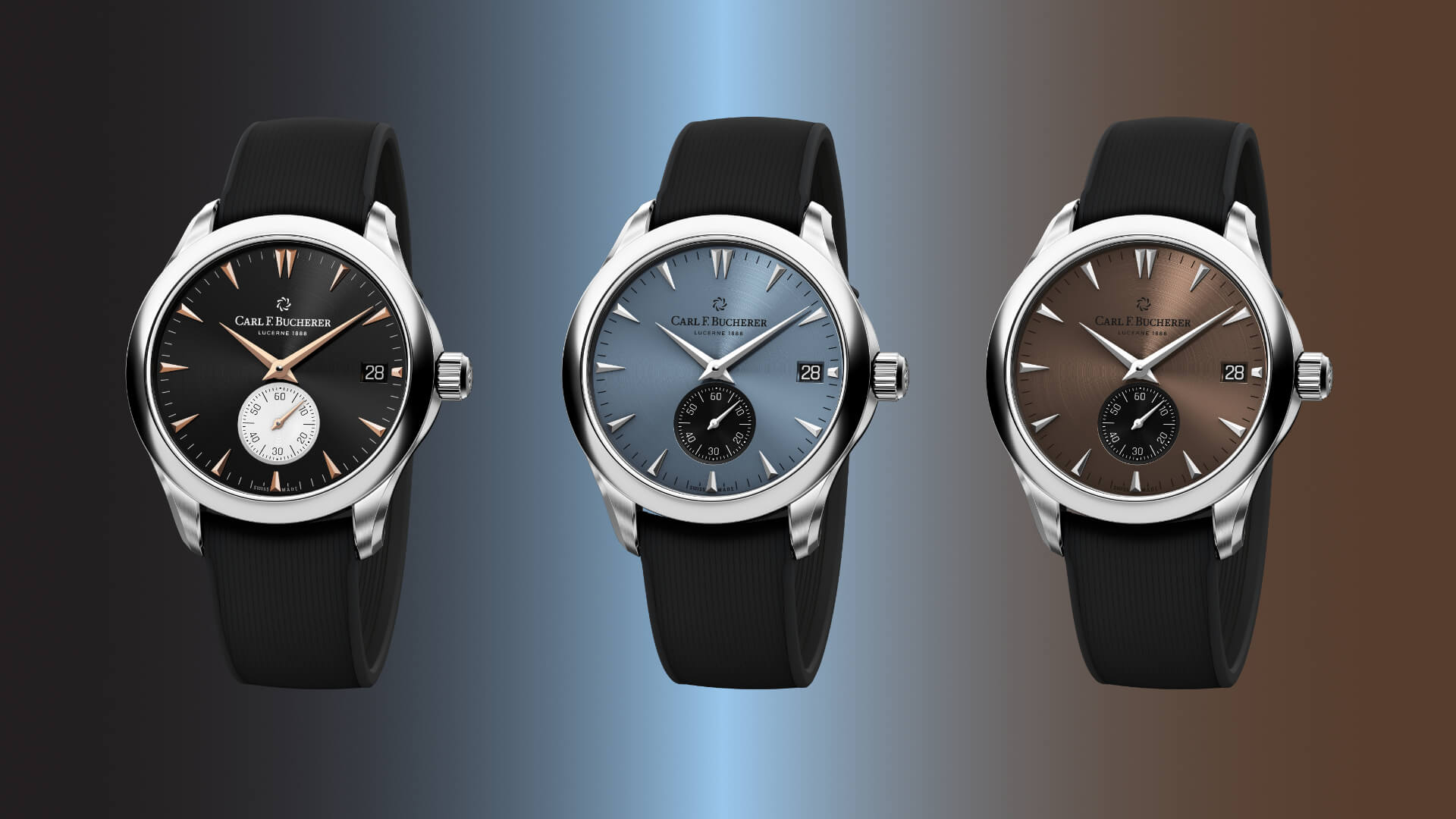 The Carl F. Bucherer Manero Peripheral has been part of the collection since 2009 when the brand debuted its first peripheral caliber. While it’s seen several iterations, unless you want diamonds or to travel to a boutique, you’ve generally been stuck with black or white dials. Now, the brand has introduced four new colors and updated the black and white dials. Now available in white, black, salmon, blue, green, and brown, some of these colors are expected, while others are a surprise. The most distinctive feature of these new dials is the circular brushing, perhaps chosen to reinforce the idea of the peripheral movement. The dials all feature beveled date windows with black wheels, with a 6 o’clock small seconds with a font that feels a bit Bauhaus. Building on the limited water resistance, the lack of lume on the hands and markers reinforces the brand’s less sporty intentions for this watch. The indices are applied and polished, with sharp beveled dauphine hands. Smartly, the rhodium plating on the hands and markers on the colorful dials is replaced with rose gold plating on the black and white dials. On the black dial, this just makes for a pretty two-tone look, but on the white dial, it avoids the poor legibility caused by putting the silver hands against the lighter dial. My choice is the brown dial, simply because it’s not a color you often see and I like the brown and black color combo.
The Carl F. Bucherer Manero Peripheral has been part of the collection since 2009 when the brand debuted its first peripheral caliber. While it’s seen several iterations, unless you want diamonds or to travel to a boutique, you’ve generally been stuck with black or white dials. Now, the brand has introduced four new colors and updated the black and white dials. Now available in white, black, salmon, blue, green, and brown, some of these colors are expected, while others are a surprise. The most distinctive feature of these new dials is the circular brushing, perhaps chosen to reinforce the idea of the peripheral movement. The dials all feature beveled date windows with black wheels, with a 6 o’clock small seconds with a font that feels a bit Bauhaus. Building on the limited water resistance, the lack of lume on the hands and markers reinforces the brand’s less sporty intentions for this watch. The indices are applied and polished, with sharp beveled dauphine hands. Smartly, the rhodium plating on the hands and markers on the colorful dials is replaced with rose gold plating on the black and white dials. On the black dial, this just makes for a pretty two-tone look, but on the white dial, it avoids the poor legibility caused by putting the silver hands against the lighter dial. My choice is the brown dial, simply because it’s not a color you often see and I like the brown and black color combo.
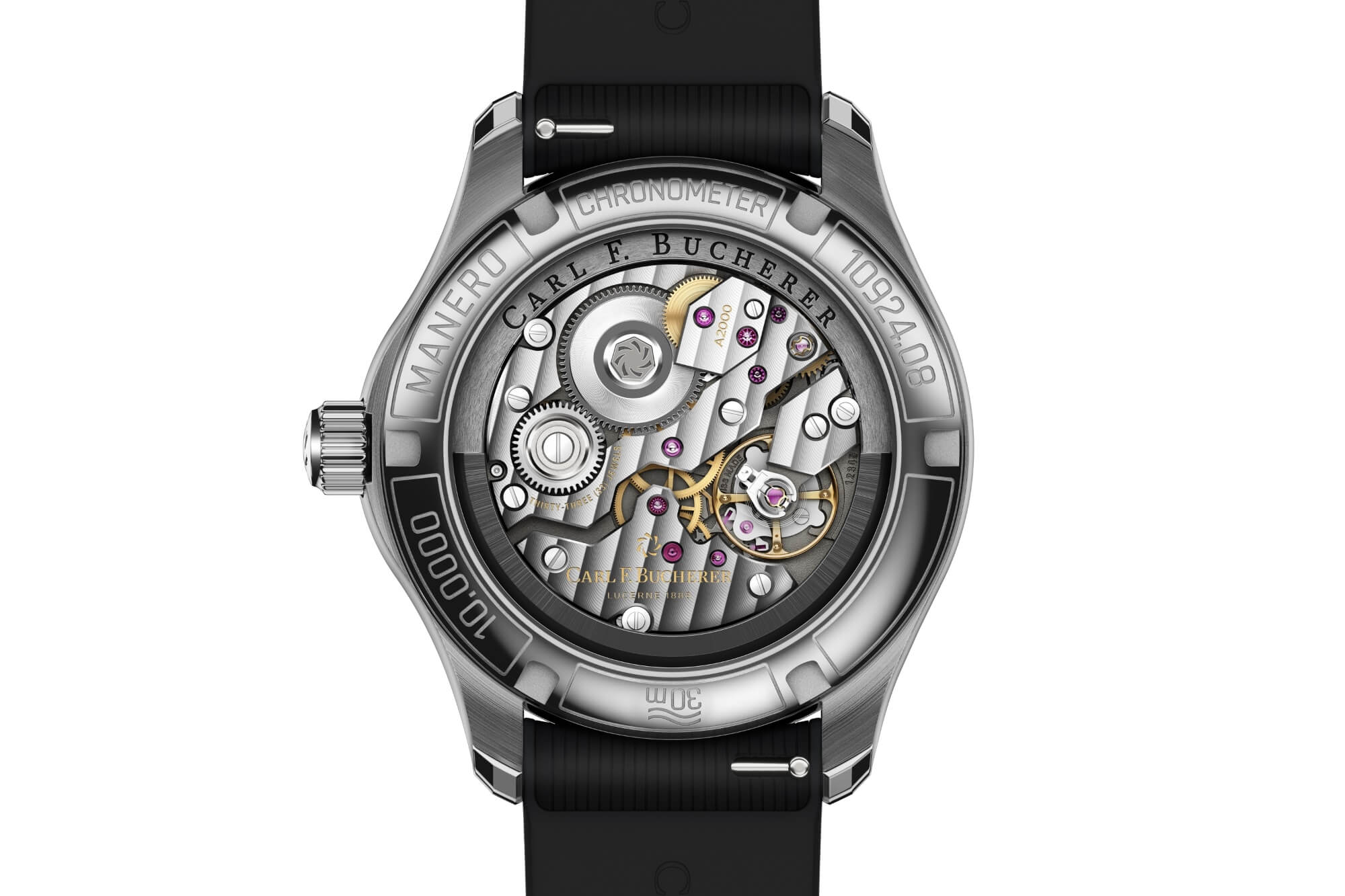
The brand’s CFB A2050 is the second iteration of its in-house peripheral rotor movement. The first, the CFB A1000 was introduced with the original model, while the newer CFB A2050 was introduced in 2016. Unlike traditional automatic movements, which have a centrally mounted rotor, this movement features a peripherally mounted tungsten oscillating weight. This allows for a thinner watch and an unobstructed view of the movement’s mechanics. The winding mechanism relies on ceramic ball bearings, which allow for bidirectional winding and require no lubrication, meaning a theoretically longer service interval. The movement is COSC certified with a 55-hour power reserve. While brands like Piaget and Bulgari have also dabbled with peripheral rotors, Bucherer deserves credit for bringing the design into serial production, with more models that are more readily available than any of its modern competitors. And yes, it’s properly in-house: Carl F. Bucherer acquired movement manufacturer Techniques Horlogères Appliquées S.A in 2007.
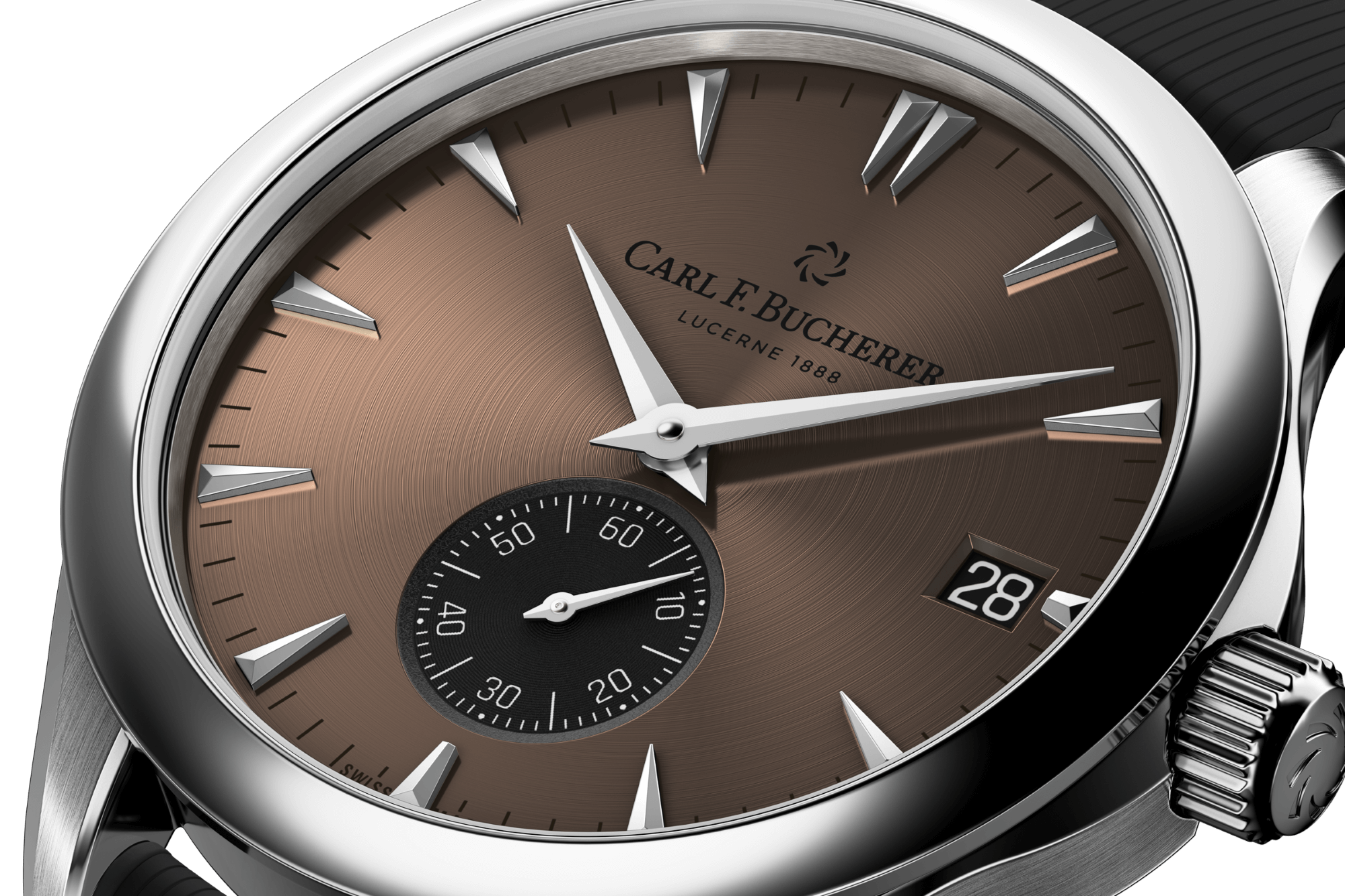 While Carl F. Bucherer calls this a “go anywhere” watch, that’s really not the case. The styling and rubber strap might give you that impression, but the water resistance is low enough that I wouldn’t feel comfortable in a lot of non-home, non-office situations. Call this a weekday warrior, not a weekend warrior. As a weekday warrior, though, these models present a case that looks beautiful with uncommon circular brushed dials and, of course, the very novel in-house caliber. The new Carl F. Bucherer Manero Peripheral models are priced at $7,900 USD. For more information, please visit the brand’s website.
While Carl F. Bucherer calls this a “go anywhere” watch, that’s really not the case. The styling and rubber strap might give you that impression, but the water resistance is low enough that I wouldn’t feel comfortable in a lot of non-home, non-office situations. Call this a weekday warrior, not a weekend warrior. As a weekday warrior, though, these models present a case that looks beautiful with uncommon circular brushed dials and, of course, the very novel in-house caliber. The new Carl F. Bucherer Manero Peripheral models are priced at $7,900 USD. For more information, please visit the brand’s website.

